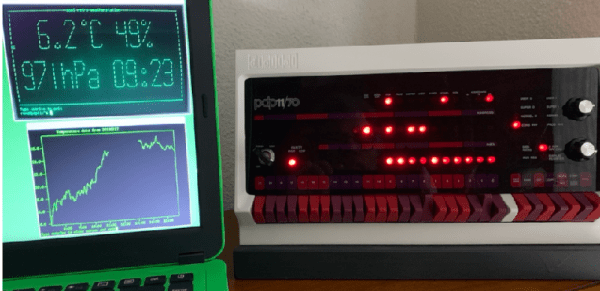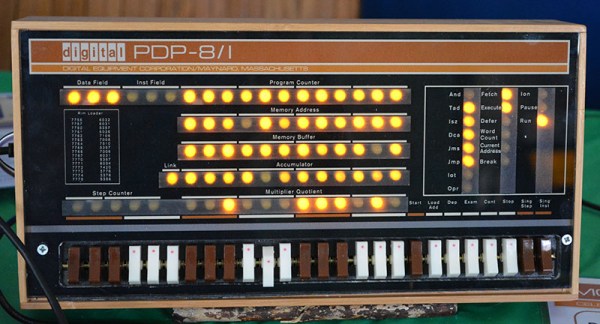The Digital Equipment Corp. PDP-11/70 is a masterpiece of Cold War-era industrial design. This microcomputer was the size of one or two modern server racks depending on configuration, and the front panel, loaded up with blinkenlights, was clad in a beautiful rose and magenta color scheme. The switches — the ones you used to toggle bits in memory — were actually custom designed covers made to match the shape of the completely unnecessary bezel. The aesthetic of the 11/70 is the intersection of baroque and modernism on the design Venn diagram.
[Oscar Vermeulen] built a miniature version of the PDP-11/70 that houses a Raspberry Pi, and [rricharz] has been hard at work bringing an original copy of BSD to this system. The first great project to come out of this effort? It’s a weather station, and it’s exactly as cool as you think it is.
A bit of ground work went into this build, including getting a historical Unix system up and running, in this case 2.11 BSD. Armed with a Pi and the PiDP-11/70 front panel, [rricharz] had a complete BSD system up and running, and with cool-retro-term, the interface looked the part. Doing something useful was another question entirely, but the Pi in the PiDP had some GPIOs free, so this ancient machine got an I2C temperature and pressure sensor.
The completed build is basically just a breadboard, a tiny diagnostic OLED, and a python script that grabs the data and sends it over to the sim. This is pressure and temperature data shoved into an emulation of a Tektronix 4010 terminal. It’s marginally useful work done by an ancient BSD system wrapped in an emulation on a Raspberry Pi. It doesn’t get better than that.
















